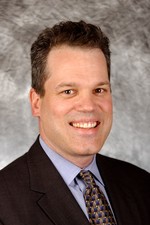
Frank Uryasz
Use of Prescription Drugs May be Latest Teenage Trend by Frank Uryasz, President, Drug Free Sport
There is a good chance that the drugs your athletes are taking aren’t detected through your drug-testing program. Most schools don’t test for prescription pain killers and sedatives.
A recent article in the New England Journal of Medicine by Richard Friedman, M.D., (N Engl J Med 354:14 1448-1450, April 6, 2006) describes a disturbing trend toward the use of prescription drugs by teenagers. Dr. Friedman relies on the Monitoring the Future drug-use survey (www.monitoringthefuture.org) and interviews he conducted to describe, qualitatively and quantitatively, the extent of the problem.
There are pages and pages of data in the Monitoring the Future study. However, let’s look at one group – 12th graders self-reporting their use of drugs during the 12 months preceding the survey. I pay particular attention to this group because they represent our high-school seniors and entering college freshman. While 1.5 percent of them self-reported that they used anabolic steroids during the previous year, 5.5 percent had used oxycontin and 9.5 percent had used Vicodin during the same period. Both are powerful pain killers. In the same study, 7.2 percent of the 12th graders reported using sedatives during the previous year.
Dr. Friedman quotes an Austin, Tex., high-school sophomore, “John,” about prescription drug abuse. “Prescription drugs are a lot easier to get than street drugs. Kids can get them on the street, from parents and friends or on the Internet.” The author also quotes “Claire,” an 18-year-old in Maine: “You can always find a doctor who you can convince that you have a sleeping problem to get Ambien or that you have ADD and get Adderall.” Dr. Friedman concludes: “Whereas they (teenagers) used illicit drugs only for recreation, they often used prescription drugs for ‘practical’ effects: hypnotic drugs for sleep, stimulants to enhance their school performance, and tranquilizers such as benzodiazepines to decrease stress.” I agree with Dr. Freidman’s finding and I would add one more “practical effect:” pain relief.
Unfortunately, the Monitoring the Future study does not tell us whether the athlete subpopulation differs significantly from their non-athlete peers. Nevertheless, I think it is reasonable to assume that the athlete’s desire to induce sleep, enhance school performance, decrease stress and reduce pain makes an athlete as likely and perhaps more likely than his or her non-athlete peers to abuse prescription drugs.
Fortunately, sports administrators have the opportunity to address the abuse of prescription drugs. Many of these drugs are banned in sport and can be discussed as part of the drug-education process. All of them can be included in your drug-testing programs, with a positive finding providing the opportunity for one-on-one counseling about the athlete’s drug-use habits. Contact Drug Free Sport if you want to discuss adding a testing and education program to deter prescription drug abuse.
